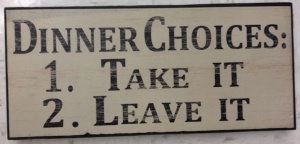 Eat your vegetables, they’re good for you!
Eat your vegetables, they’re good for you!
How many times did we hear this as kids, and how many times have we told our own kids?
A recent study published in the Journal of Consumer Research may teach us all an important lesson.
Three groups of children were told three different versions of a story.
One group of children heard that Tara, a girl in the story, had some crackers before she went out to play. A second group of children heard that Tara ate some crackers and that they were yummy and made her feel happy. The third group heard that Tara had some crackers and that they made her feel strong and healthy. The story also reminded the children that crackers were good for them.
Then the researchers put left each child alone in a room with a bowl of crackers.
The children who heard the story about Tara’s healthy crackers ate, on average, only 3 crackers.
The children who were told Tara ate the yummy crackers that made her feel happy ate 7 crackers.
But the children who heard that Tara just ate crackers ate, on average, 9 crackers.
The moral of the story? Kids are smart. The more we try to sell how good a food is, the more suspicious they may get.
Think about it. Have you ever seen an advertisement for raspberries?
I haven’t. I love them. And when I can go pick them or when they are in season and affordable, I buy them. They are yummy. No one has to sell raspberries, they sell themselves.
Try a less is more approach with vegetables. Stop trying to sell them.
Buy them, cook them, put them on the table and eat them.
Stick to age-appropriate portion sizes for starches and proteins and avoid offering “make-up” foods like yogurt and cereal when your child didn’t tuck in at dinner.
And don’t forget this kitchen rule:

